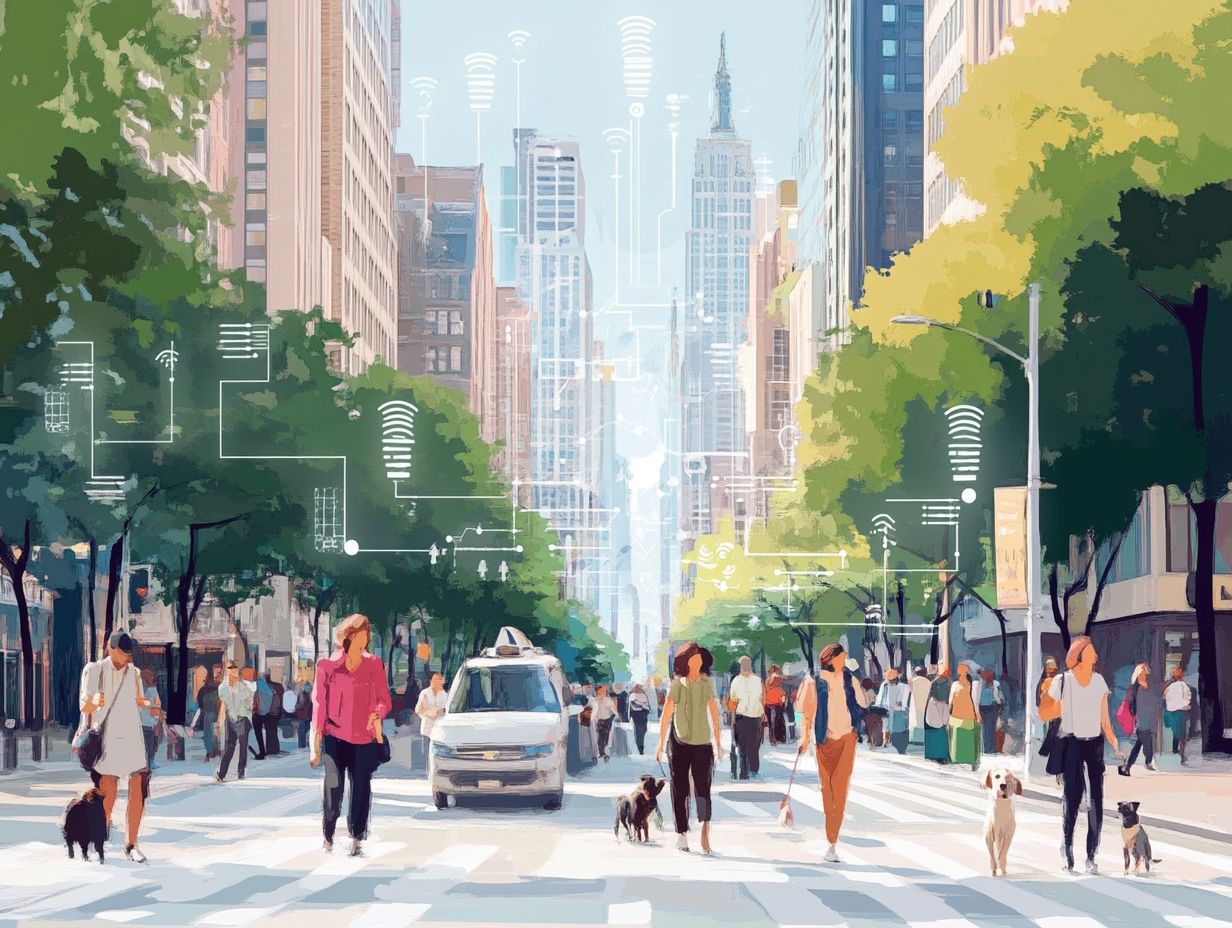In today’s rapidly evolving urban environments, the concept of smart city planning is becoming increasingly important. This article examines the intersection of technology, urban design, and urban mobility with a particular focus on how insights into foot traffic and pedestrian behavior can transform city planning efforts. It defines what smart city planning entails and discusses its objectives, highlighting the essential role that understanding pedestrian movement plays in creating vibrant and efficient urban spaces. By exploring methods for collecting foot traffic data, leveraging real-time insights, and showcasing real-world applications, this article illustrates how these insights can lead to more responsive and effective city planning. Join us as we explore how foot traffic can inform and enhance the future of our cities.
Understanding Smart City Planning

Smart city planning involves the development of urban areas that integrate advanced technologies, data analytics, and community engagement to create more livable, sustainable, and efficient environments.
This approach utilizes smart sensors and real-time data collection to engage the community in the planning process, enhancing the quality of life for urban residents while optimizing city services and infrastructure development.
The primary goals of smart city planning include improved connectivity, environmental sustainability, and economic growth. These objectives assist planners in identifying urban challenges and fostering urban resilience in response to changing demographic and mobility patterns through demographic analysis and city management strategies.
As urban ecosystems grow increasingly complex, data-driven decision-making and collaboration among stakeholders will become essential, supported by location-based services and connectivity analysis.
Definition and Goals of Smart City Planning
A smart city is defined as a technologically advanced urban environment that leverages data analytics and smart technologies to enhance city services, infrastructure, and community engagement strategies, ultimately improving urban living.
This approach focuses on key goals such as accessibility, public health, and social equity, creating environments where all residents can thrive.
For instance, intelligent transportation systems not only reduce congestion but also improve access to public transportation for individuals with mobility challenges. Data-driven health services can better identify community health trends, enabling urban planners to enhance healthcare access and outcomes by allocating resources more effectively through spatial analysis and predictive modeling.
The overarching goal is to address gaps in social equity, ensuring that all communities benefit from advancements in technology, participatory governance, and citizen feedback mechanisms.
The Importance of Foot Traffic Insights

Foot traffic insights play a crucial role in shaping urban environments by offering essential data on pedestrian movement and behavior. This information helps city planners and stakeholders understand how public spaces and infrastructure are utilized.
Through data analytics and location-based services, cities can gain a better understanding of mobility patterns and traffic flow, which leads to more effective urban planning and infrastructure development efforts. Such insights support improved community engagement initiatives, enhance the quality of public spaces, and foster economic development by bolstering local businesses and retail strategy performance.
Understanding these dynamics is essential for establishing vibrant and accessible urban ecosystems that prioritize user experience and walkability.
How Foot Traffic Insights Can Inform Smart City Planning
Foot traffic insights are crucial for smart city planning, as they enable urban planners to make informed, data-driven decisions regarding land use, public space design, and community engagement strategies.
By analyzing pedestrian movement patterns, city planners can identify areas with high foot traffic and use that information to adjust zoning regulations, ensuring that commercial and residential developments are appropriately situated for mixed-use development.
This data also plays a vital role in transit-oriented development and the placement of mobility hubs, helping to place transportation infrastructure—such as bus and metro stations, as well as tram stops—in locations where they will be most utilized.
Understanding foot traffic can aid in designing pedestrian-friendly infrastructure, promoting active transportation modes like walking and cycling, and ultimately contributing to sustainable urban development through smart transportation and environmental impact initiatives.
Collecting and Analyzing Foot Traffic Data

The collection and analysis of foot traffic data are essential for urban planners to understand pedestrian behaviors and optimize the use of public spaces.
This process is greatly enhanced by the use of IoT sensors, smart sensors, and big data technologies, along with digital mapping and mapping tools for precise data visualization.
Methods and Tools for Gathering Foot Traffic Insights
Various methods and tools are available for gathering insights on foot traffic. These include smart sensors, mobile applications, geographic information systems (GIS), and interactive dashboards, all of which provide valuable data for urban planners to conduct urban analytics and spatial analysis.
Implementing Foot Traffic Insights in Smart City Planning

Leveraging foot traffic insights to enhance smart city planning is an effective approach to developing urban design, fostering community engagement, and ultimately improving the quality of life and livability for residents through efficient service delivery.
Practical Applications and Case Studies
Practical applications of foot traffic insights can be seen in various case studies where urban planners effectively utilized this data to inform decisions regarding public spaces, transportation planning, and community engagement through stakeholder collaboration.
A notable example is the city of San Francisco, where officials employed foot traffic analytics to redesign public parks and enhance street safety measures. By analyzing patterns of pedestrian movement, the city identified high-traffic areas that required improved signage and lighting, resulting in a significant reduction in accidents.
Similarly, in Amsterdam, planners harnessed foot traffic data to enhance cycling infrastructure, which led to increased bike usage and a more sustainable urban environment through event tracking and policy development.
These case studies not only highlight the tangible benefits of incorporating foot traffic insights into urban initiatives but also offer valuable lessons for future planning, such as the importance of adaptive designs that respond to real-time data and urban innovation.





